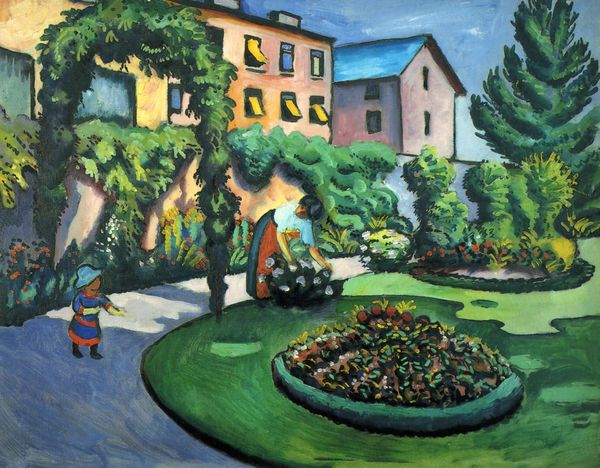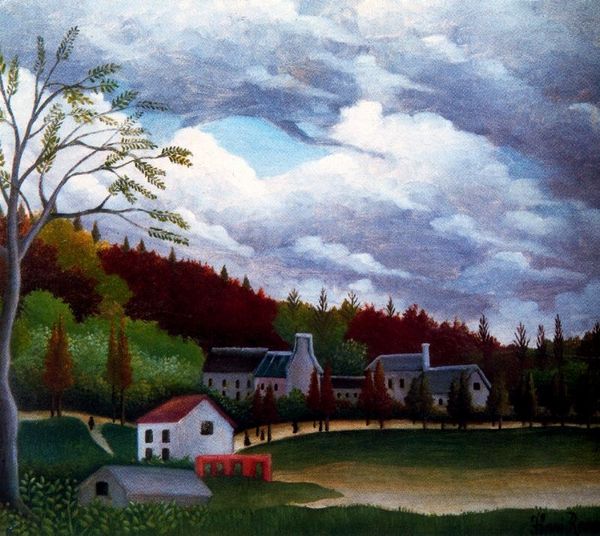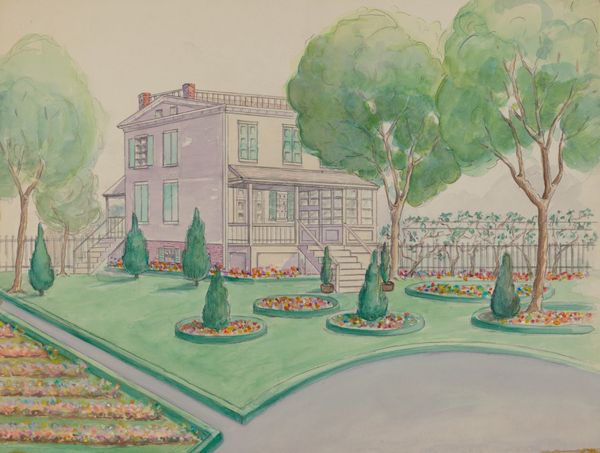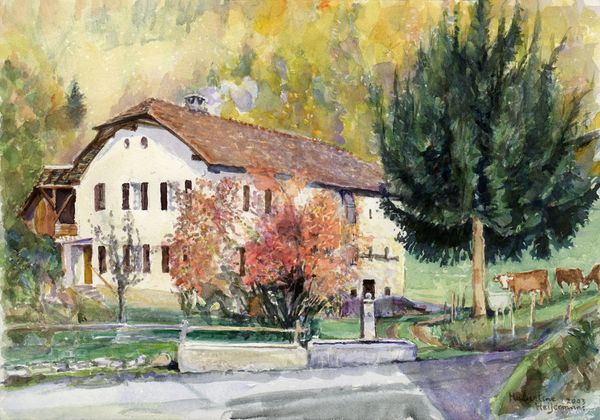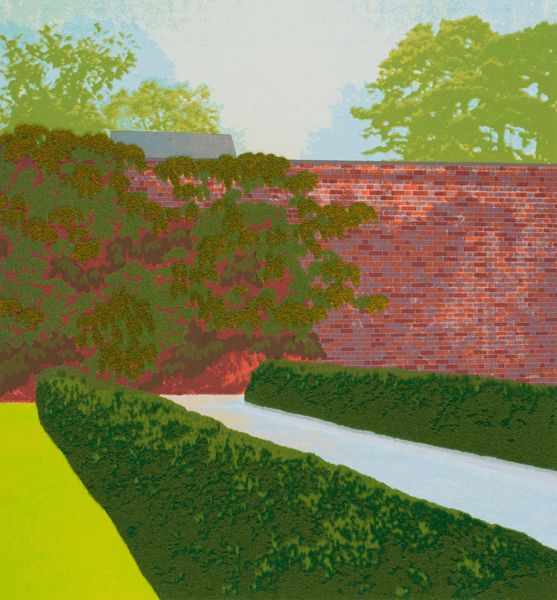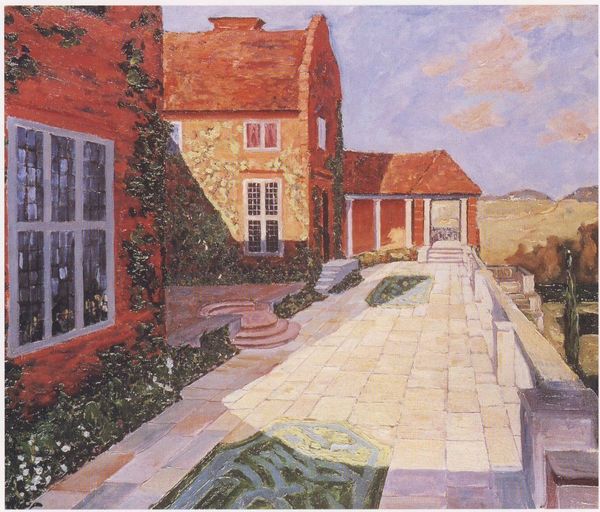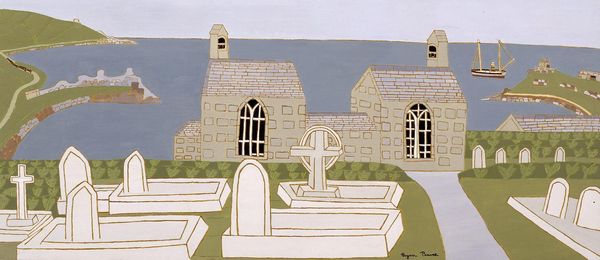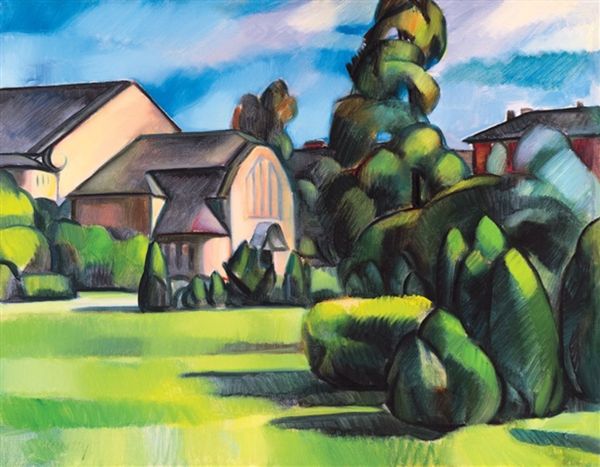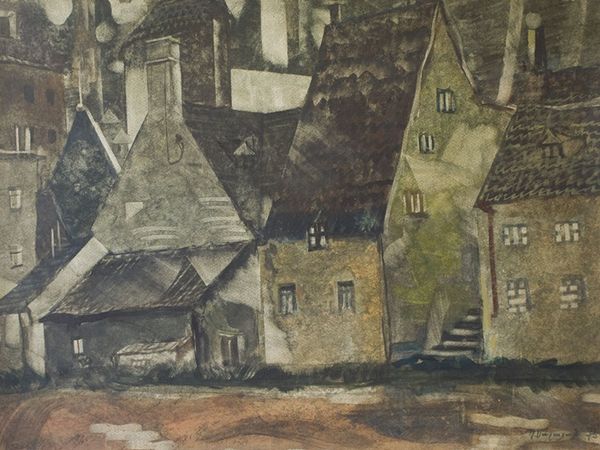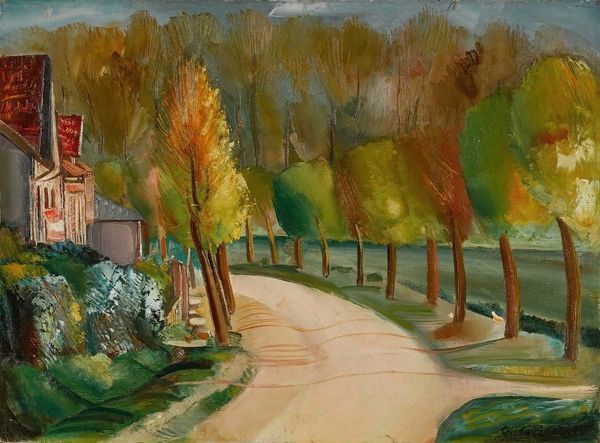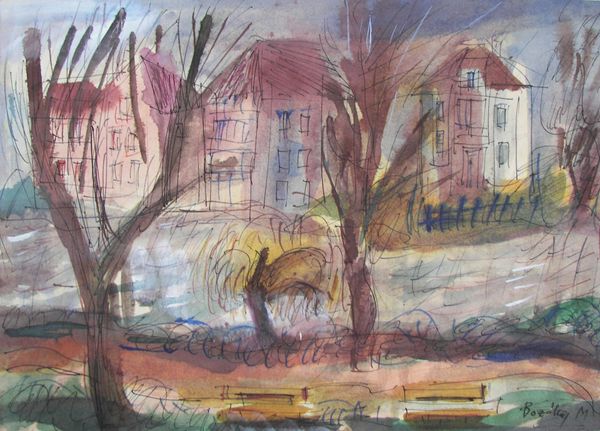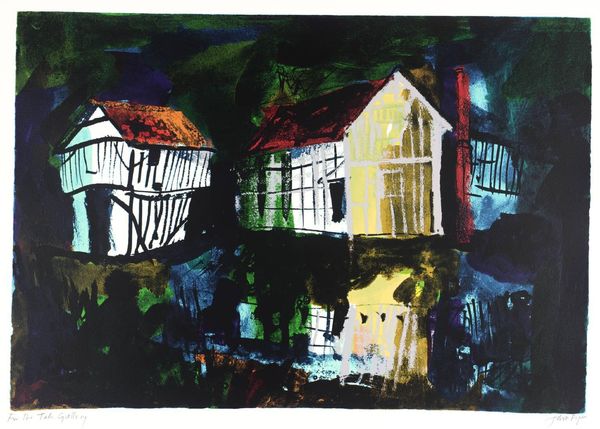
Copyright: Adolf Dietrich,Fair Use
Curator: What strikes me immediately about Adolf Dietrich's "Nachbargarten im Herbst," or "Neighbor's Garden in Autumn," completed in 1931, is its stillness. It's a quiet cityscape rendered with a unique sense of almost naive realism. Editor: It evokes a distinct sense of melancholy. Those swirling clouds loom over a garden where everything feels deliberately placed, contained even. The trimmed hedges and architectural elements resonate with control. It's autumn, yes, but a curated, almost frozen autumn. Curator: Dietrich's meticulous tempera technique is evident; he clearly labored over every detail, from the rendering of leaves to the window panes. The material reality is precisely depicted, almost obsessively. It brings to mind the broader shift during the early 20th century, particularly in Switzerland, concerning rural economies and increasing industrialization. He was a farmer and postman and self-taught, creating art using methods available to him. Editor: Indeed, notice the pale, centralized pavilion. Gazebos often symbolize refuge, a carefully constructed space apart from the wildness of nature. The wheel-like design on the facade may symbolize a connection to nature's cycles, perhaps reflecting on how these idealized spaces interact with the surrounding landscape and even hinting at nature being tamed. Curator: Interesting. The surrounding gardens are certainly far from wild. I see the very clear labor involved in shaping those hedges, mirroring anxieties surrounding the exploitation of rural labor in urban centers at this time. It suggests not just idealized aesthetics, but the physical toll it takes. Editor: Perhaps, but that organized shaping can also refer to more classical forms of order—consider that window-like structure centrally placed there, reflecting similar proportions as the buildings and acting as an image of stability and cultivated growth during a turbulent time in Europe. Dietrich's style harkens back to an almost Biedermeier aesthetic of domestic harmony, although a more stylized one. Curator: The social context and material process certainly intersect here; we see idealized forms and meticulous craft used to either emphasize the artist’s labor or to suggest historical memory… Editor: ...or both! A compelling look at how constructed forms and symbols come to terms with anxieties over change, reflecting a time of both order and quiet apprehension.
Comments
No comments
Be the first to comment and join the conversation on the ultimate creative platform.
